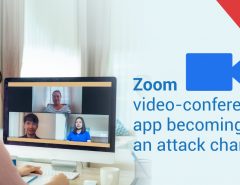Businesses know the importance of cybersecurity. But do they know the importance of employees when it comes to cybersecurity?
After all, a business’s employees offer the strongest defense against the varied manners of threats that exist in the cybersecurity universe nowadays. The business can employ the most advanced anti-virus or firewall solutions but it will all come to naught if its employees themselves don’t take a hard and serious line on the matter.
In that context, one key shortcoming which businesses can try and weed out are bad tech habits of their employees. But if done correctly, they can represent a significant benefit.
1. Poor password hygiene
Today’s Internet is ruled by passwords. There’s an account and consequently a password for every account. And it’s not a stretch to say that if a malicious entity gets access to that password, he or she has a treasure trove of rich information and data which can be used to cause havoc.
The reason for that is most people use multiple passwords for the same account which mean that if you get one, you get them all. And even those who do try and use different passwords, create ones which are laughably easy to crack – say your own date of birth, your house name or your children’s name. All these are examples of poor password hygiene and can be extremely dangerous for an organization. The solutions for this would be to choose a tough but easily remembered password, i.e.: a mix of the first and last letters of your names with a specific number set representing something specifically to you.
2. Using pirated software
We are all guilty of this, some time or the other, but what we don’t realize is that the risk isn’t just that it is illegal or against the law – it can also be extremely dangerous. Pirated software is the key agent through which malware and spyware are distributed. Hackers could even put vulnerabilities in cracked versions of popular programs and distribute it, later exploiting these vulnerabilities. Secondly, pirated software is often put on shady websites which can often be full of malware.
Read more: Tips to create a cybersecure culture at work
3. Sharing sensitive details on public WiFi
This is a global economy and the time when work was done sitting in an office is long gone. People move around now and a lot of work is conducted in coffee shops, airports, railway stations and other public places. But what is important to understand is that public WiFi networks may not be as secure as a secured office network. In fact, they may not even be close. Public WiFis might be completely open to hacker manipulation leading to hacking and data breaches. Employees should be continuously reminded to be careful about sending information about their work when they are connected to public WiFi networks.
4. Backing up work
This isn’t just a cybersecurity pointer – it is a general productivity one. Employees work on thousands of different things at work but if they don’t back it up regularly, they leave themselves at risk. Data breaches can happen, ransomware attacks can take place or systems can just crash. Without timely backups, the data is lost forever or even worse, goes into the hands of malicious criminals who will make sure they use the data for nefarious purposes. Back up often, back up enough has to be the motto for employees.
5. Be careful of your personal data
We live in a digital world where everyone wants your personal data. From big giants like Facebook, Google, Instagram to even small services, personal data is gold and once given, it’s very difficult to take it back. But as the recent Cambridge Analytica scandal showed us, that can also have consequences. While employees don’t have to go completely the other way and not use social media completely, they must understand the risks of sharing all data online without an idea of what happens to it. The EU’s General Data Protection Regulation (GDPR) addresses this to a certain extent, but individual organizations must also step up to the task.
To bolster the cybersecurity, businesses can also consider Seqrite’s range of solutions which transform enterprise security by seamlessly managing targeted attacks, ransomware attacks and advanced persistent threats with Seqrite’s multilayered defense in depth solutions.
As an IT security partner for your business, Seqrite provides comprehensive security from advanced cyber threats. To know more




